Ten must-see places within reach of Rome
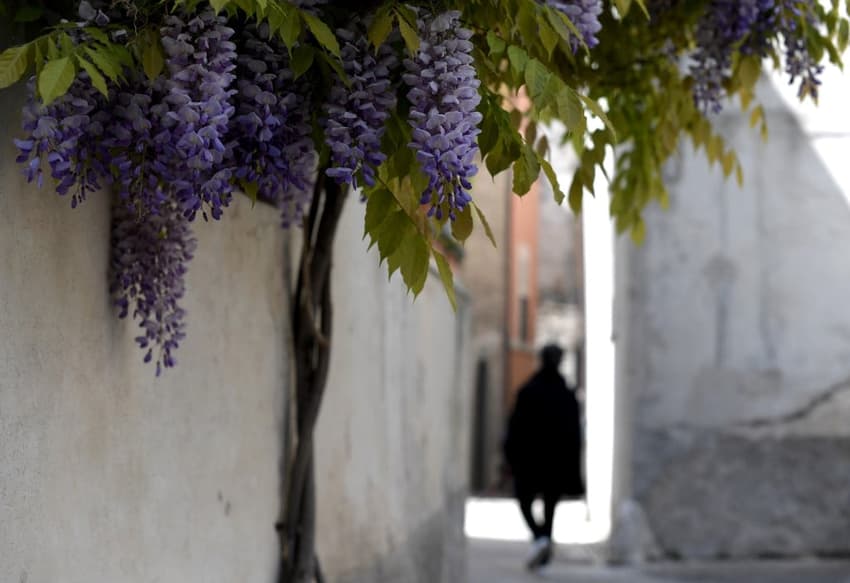
Rome has a lot to offer, but if you're looking for variety or just want a break from the city, there's a treasure trove of towns within easy reach.
Whether it's for an afternoon trip or a long weekend, Lazio and its neighbouring regions – Umbria, Toscana and Campania – offer an abundance of places that are rich in beauty, character and delicious specialties. Just take your pick from the list below.
Assisi
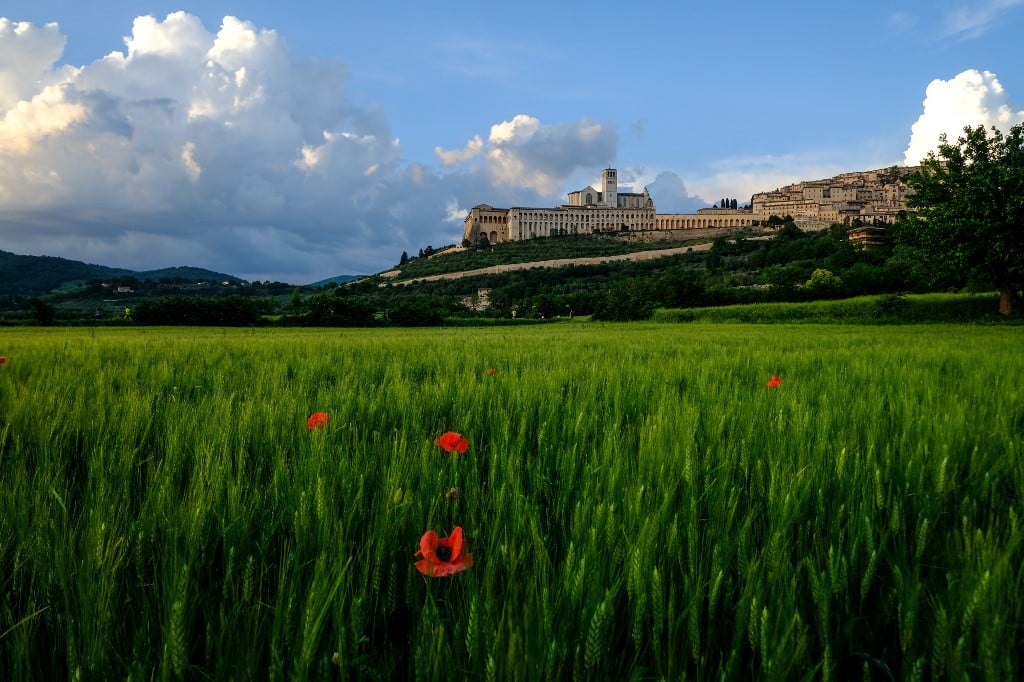
Photo: Andreas Solaro/AFP
Why? Home of Italy’s patron saint and lovingly restored to its medieval glory after a devastating 1997 earthquake, Assisi enjoys endless panoramic views from its hillside terrace.
Where? Umbria, 130km north of Rome and 20km east of Perugia.
How to get there Assisi is just over two hours away from Rome by regular (regionale veloce) train. You can then take a bus from the station into town.
READ ALSO:
When to go While it is a pleasant destination all year round, spring and autumn will spare you from weather extremes. Bear in mind that the town gets very busy on St Francis Day (October 3rd-4th).
How much time will I need? Assisi is small enough to see in about three hours (not including the bus to and from the station). Getting there and back in a day is certainly possible, but it can also be comfortably combined with an overnight stay in nearby Perugia for a weekend trip.
What to see The imposing Basilica di San Francesco, on the left-hand side when facing the town from below, is the big draw. The Roman temple nestled among the buildings along the central Piazza del Comune also makes for a good photo. For the best views of the surrounding countryside, climb up to the ruined fortress (La Rocca) above the town.
Bagnoregio
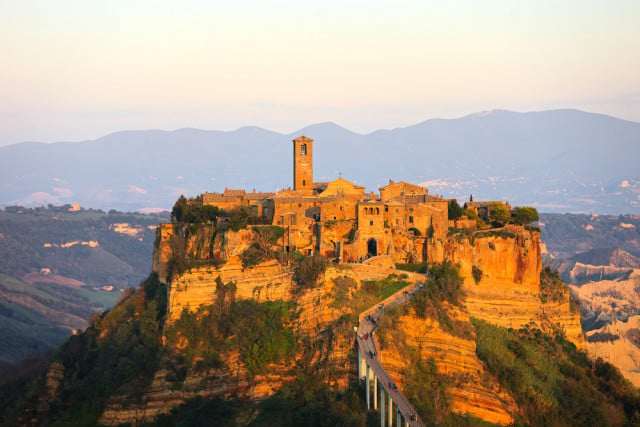
Photo: StevanZZ/DepositPhotos
Why? Sitting on a steep outcrop in the middle of a vast rocky valley and reached by a long bridge from the modern town, Civita di Bagnoregio is mostly deserted save for a handful of street cafes and restaurants and souvenir shops. But it is worth visiting for the magnificent setting and haunting charm.
Where? Lazio, 90 km north/northwest of Rome and 10 km south of Orvieto.
How to get to there To reach Bagnoregio you need to take a train to Orvieto (1 hour 10/20 mins) and catch a blue Cotral bus. Bus stops are near the train station. Bear in mind that buses do not run on Sundays and public holidays. The rambling bus takes about 40 minutes, and the old town is a 30 minute walk from the bus stop, including the bridge crossing.
READ ALSO:
- Civita di Bagnoregio, the Italian town that refuses to die
- 14 reasons why Lazio should be your next Italian holiday destination
When to go Like Assisi, Bagnoregio is best visited in the spring and autumn: the dry rocky surroundings and clifftop setting can make it uncomfortably hot in the summer months and chilly in the winter.
How much time will I need? Anything between a couple of hours and half a day is more than enough to walk around and sit down for lunch. If you want to make a longer day or a weekend of it, Orvieto makes for a good stopover point and overnight stay option.
What to see Bagnoregio’s greatest asset is its setting. Inside the old town, rustic stone houses, and the occasional semi-wild garden, are sure to please photographers.
Bracciano – Trevignano – Anguillara
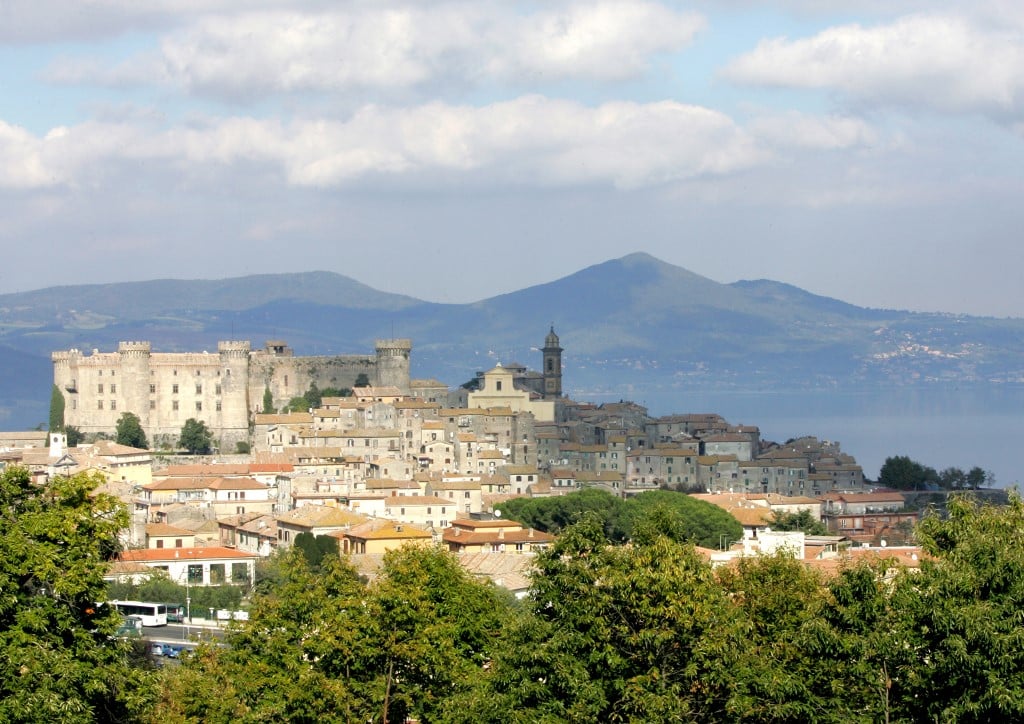
Photo: Andreas Solaro/AFP
Why? A trio of charming towns – Bracciano, Trevignano and Anguillara - set on the shores of lake Bracciano together make for a full day or a relaxing weekend away from Rome. All three are different, but all are equally attractive.
Where? Lazio, 35km northwest of Rome.
How to get there The easiest starting point is Bracciano town, reached by train from Rome (about an hour from Ostiense station). Cotral buses run between the three towns, making it possible to visit all three in a day, and between Anguillara and the nearest railway station 5km away. Trevignano has no train station, so in order to see all three, your route would be either Bracciano – Trevignano – Anguillara, or Anguillara – Trevignano – Bracciano. It may be best to leave Anguillara for last as it has the best afternoon/sunset light. If you are an avid cyclist, you can cycle between the towns along the lake.
READ ALSO:
When to go Spring through until mid-autumn is the best time to make the most of the refreshing lakeside setting and see the best of the flowering plants and mini-gardens.
How much time will I need? Each town is worth a couple of hours’ stopover. Seeing all three in a day is a possibility, but an overnight stay in Trevignano will make for a more leisurely weekend.
What to see Each town offers cosy old streets and nooks tended with great care by the residents, adorned with tastefully-arranged flowering shrubs, vines, and potted plants; Trevignano’s old main street behind the monumental archway is the most accessible example, but the steep lanes between Bracciano’s castle and the lake-view terrace are also worth a look. Bracciano has a commanding panorama of the lake from its lofty terrace, while Anguillara has a pleasant lakeside promenade for an afternoon stroll (and don’t miss the old town, and the fortress ruins, up on the hill if you are looking for snapshots).
Calcata
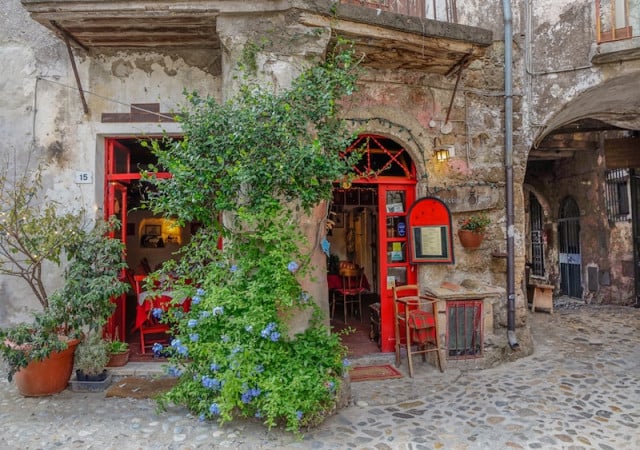 Photo: rvrphotos/DepositPhotos
Photo: rvrphotos/DepositPhotos
Why? Deserted on Benito Mussolini’s orders in the 1930s when it was mistakenly declared unsafe, Calcata later became an artists’ haven, and is now enjoying a revival as a day trip destination. As with Bagnoregio, Calcata’s best assets are its dramatic position, jutting out on a cliff high above a wooded valley, and its medieval warren of old stone houses.
Where? Lazio, 35 km north of Rome.
How to get there The only way to get to Calcata by public transport is to take a Cotral bus (about an hour) from Saxa Rubra, the local train stop reached from Rome's Flaminia station (trains run every 10-15 minutes – check atac.roma.it for exact times; you can use a local Atac metro/bus ticket, or your monthly pass, for the 15-minute train trip). Bear in mind that as with most Cotral buses, there are none on Sundays... which sadly limits Calcata’s potential as an overnight stop, unless you are driving.
When to go Spring through to mid-autumn is the best time, as it will let you see Calcata at its liveliest and most inviting.
How much time will I need? Calcata can be seen in just an hour, but makes for a relaxing half-day or day trip. There are a few cafes and bars set around the tiny town if you fancy lunch, dinner or a drink.
What to see Other than visiting the old town, with its narrow lanes and art shops and scenic lookouts, you can lengthen your day by taking a stroll in the valley below. The views up at Calcata are never clear enough to make for a good photo, but they do let you fully appreciate its clifftop perch.
Capri
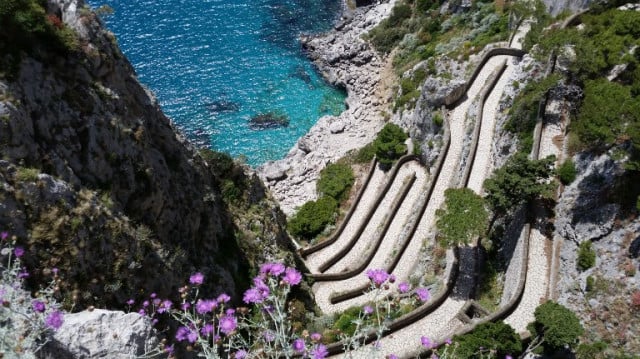
Photo: Daniel Slim/AFP
Why? Capri is gorgeous, and a radical change of scene from Rome that makes for a refreshing break – all within surprisingly easy reach. Do not be put off by its posh image; if you don't fancy browsing designer boutiques, there are plenty of pleasant walks offering stunning views.
Where? Campania, 210 km southeast of Rome and 50 km southeast of Naples.
How to get there If you do your homework with the timetables, it is possible to get from Rome to Capri in about two and a half hours. The Freccia trains take only an hour to get from Rome to Naples (the less expensive Intercity takes two hours); from there it is a short bus/tram/taxi ride to Molo Beverello, the departure point for the Capri-bound ferries (see schedule here). The faster boats leave from there and take 40-50 minutes while slower ones leave from Calata Porta di Massa, a few minutes away and take an hour and a half).
READ ALSO:
When to go Visiting from mid-April to late October will get you the best weather. The winter months will guarantee an absence of tourist crowds, but you may be dealing with limited boat service. The height of summer (mid-July through August) is so busy that it is best avoided.
How much time will I need? It is possible to see Capri in a day, or even half a day if you are in a hurry; but hurrying around in a place as beautiful as this may defeat the object. The best way to appreciate the island is to stay overnight, letting you enjoy the peace and quiet when the day-tour groups have left, or before they arrive at about 11am. Despite Capri’s upscale reputation, it has quite a few reasonable two and three star hotels, and Anacapri has a wealth of holiday apartments. Some hotels impose a two-night minimum stay in the high season, but alternatives do exist.
What to see If luxury shopping is not your thing, head to Anacapri for the seggiovia, a chairlift ride to the top of Monte Solaro, Capri’s highest mountain offering breathtaking views. Anacapri is a pleasant town worth lingering in; walk down its pedestrian street and make a detour to the San Michele Church to look at its painted majolica floor depicting Adam and Eve’s expulsion from Heaven. For the more adventurous, there are walks from Punta Tragara high above the coastal cliffs, from Capri town to the ruins of Villa Tiberia, from Monte Solaro down to Anacapri, and from Anacapri to the Migliara lookout… among others.
San Gimignano
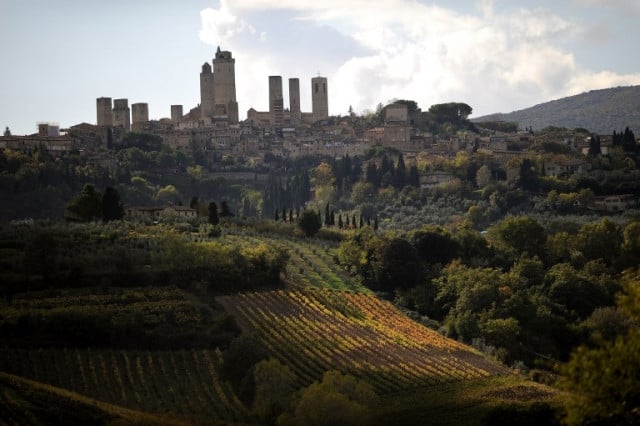
Photo: Filippo Monteforte/AFP
Why? Charmingly medieval, San Gimignano bears marks of encroaching tourism but is not spoiled by them. With its 14 towers bristling above the otherwise low skyline, this town, a sort of Tuscan Manhattan, is set among peaceful rolling hills and has enough beauty within and beyond its walls to please even the most demanding photographer.
Where? Tuscany, 210 km northwest of Rome and 30 km south of Florence.
How to get there You need to catch a train Florence then take the local train – an hour’s ride – to Poggibonsi station, and a connecting TiEmme bus (20-30 min) to San Gimignano.
READ ALSO:
- The very best of the Tuscan Maremma
- How you can stay in an 'abandoned village' in the Tuscan forest
- In search of silence in the Casentino forest
When to go San Gimignano may be less inviting in the depths of winter, but speaking from experience, it is delightful from early spring to early November.
How much time will I need? San Gimignano can be easily seen in a couple of hours, but its charm is best appreciated at a more leisurely pace. The hands-down best way is with an overnight stay that will let you have the streets virtually to yourselves in the late evening and early morning, especially outside the busy summer months.
What to see The town is ideal for leisurely browsing; its two central squares are surrounded by picturesque buildings, not to mention the famous towers. Walk up to the old fortress for a better view, or climb the Torre Grossa, the highest of the surviving towers, for the best view of the town and the surrounding countryside. Grab a seat at the outside tables of the Enoteca di Vinorum looking out over the Tuscan landscape to soak in the sun – but keep in mind that the place is quite popular at sunset, and there are only half a dozen tables!
Spoleto
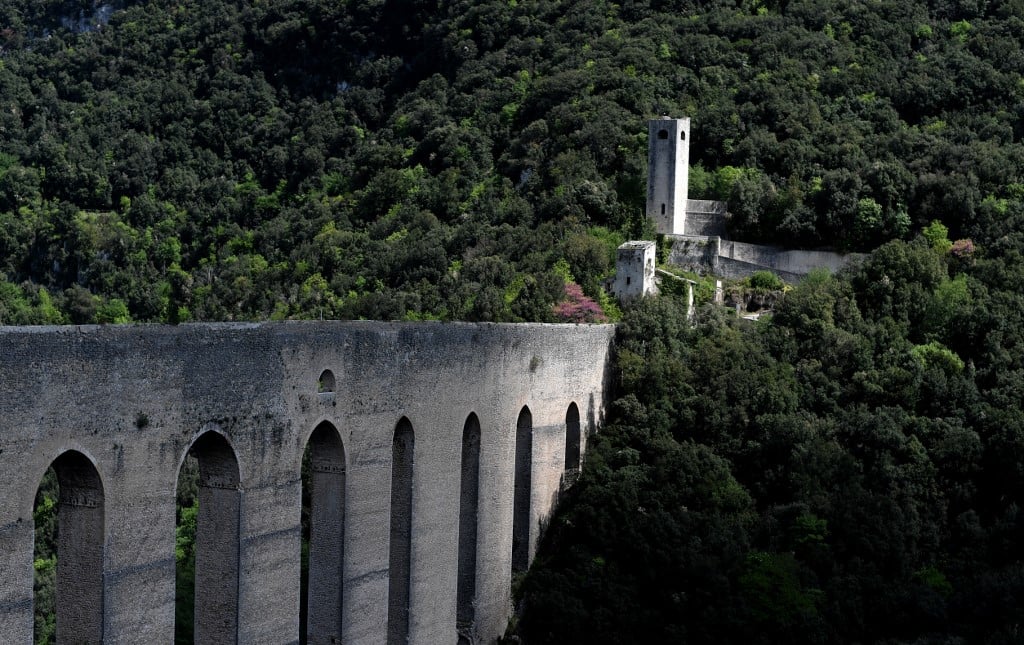
Photo: Tiziaiana Fabi/AFP
Why? Set on a steep hillside with dramatic views across a deep gorge on its other side, Spoleto has a lovely Duomo square, a stunning medieval viaduct bridging the gorge, and a Roman theatre.
Where? Umbria, 100km north of Rome.
How to get there Spoleto is relatively easily reached by train, about an hour and a half from Rome. A shuttle bus runs between the train station and Piazza Garibaldi, the square at the bottom of the old town. The old town itself is largely vertical, but there is help in the shape of an escalator going from the vicinity of Piazza Garibaldi to the fortress (Rocca) at the top; you can then see the town with considerably less effort as you descend.
When to go Spring through mid-autumn is the best time, as the surrounding hills can look somewhat drab in the winter months.
How much time will I need? Spoleto can be seen in half a day, making it a reasonable day trip from Rome. Combining it with Norcia makes for either a long day or a leisurely weekend.
What to see The escalator will leave you off the side of the wide circular trail going around the Rocca fortress (called via Gattaponi; its other side is called via del Ponte). Going clockwise along the trail lets you look at the town and nearby hills and take in the star attraction, the 81-metre-tall Ponte delle Torri viaduct, halfway along the way. There is a hotel with a scenic overlook (Hotel Gattapone) right next to it that makes for a good drinks stop or a striking spot for an overnight stay.
Ostia Antica
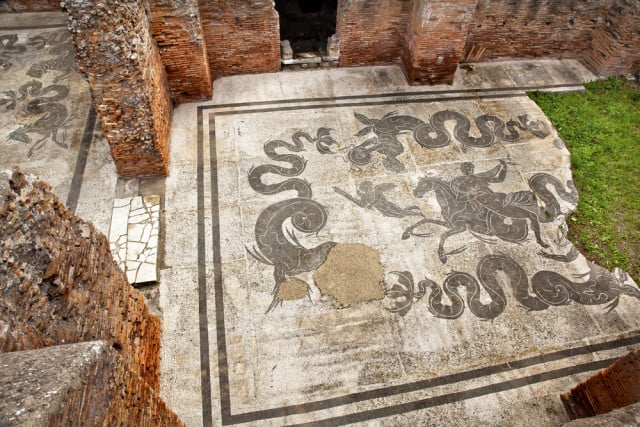
Photo: billperry/DepositPhotos
Why? The largest urban archaeological site within easy reach of Rome, Ostia Antica may not have the reputation of Pompeii but gives curious visitors a good idea of a Roman city and can be visited in a leisurely half-day outing.
Where? Lazio, 20 km southwest of Rome.
How to get there Ostia Antica (not to be confused with Ostia “proper”, the nondescript modern seaside town) is serviced by frequent local trains (every 15 mins, taking about 25 mins) leaving from the Roma-Lido station next to Piramide metro.
READ ALSO:
- Seven crowd-free alternatives to Italy's tourist hotspots
- MAPS: Which are the safest parts of Italy to visit in terms of Covid-19 infections?
How much time will I need? If you're in a hurry, you can see the highlights in under two hours; a half day, perhaps with a picnic lunch, will let you explore at a more manageable pace. Keep in mind that the site is quite extensive.
What to see The ruins, obviously… there are no frescoes as you would see in Pompeii or Ercolano, but if you take the time to explore the streets, Rome’s one-time maritime port still lets you visualize the way of life two millennia ago.
Tivoli
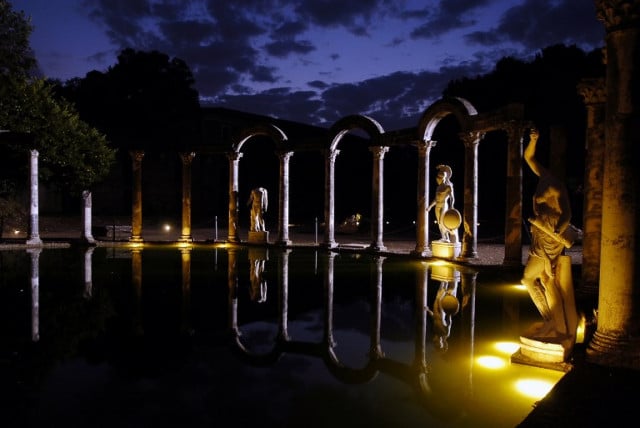
Photo: Andreas Solaro/AFP
Why? An excellent summer getaway, Tivoli has three villas to cater to every visitor’s taste: the impressive Roman ruins of Villa Adriana just outside town, the romantic gorge of Villa Gregoriana with its gushing waterfalls, and the Renaissance masterpiece of Villa D’Este with its thousand fountains.
Where? Lazio, 25 km east of Rome
How to get there Unfortunately, the approach to Tivoli makes for a rather unappealing introduction. You would have to brave the ugly bus terminal at Ponte Mammolo to get on one of the regular Cotral buses (takes about an hour; make sure you get off at the Piazza Garibaldi stop in the town centre; villa D’Este is only a few steps away), or take the train (between 45 min and an hour) past Rome’s dreary eastern suburbs to the dilapidated Tivoli station and make your way from there (in which case, Villa Gregoriana 200 m away, at the end of Viale Mazzini north of the station, will be your nearest destination). Villa Adriana is a local bus ride away (about 2 km).
When to go Spring, summer and early autumn are best. The water attractions at Villa Gregoriana and Villa D’Este make for a welcome escape from the oppressive summer heat. As an added bonus, Villa D’Este offers night visits with magical subtle lighting between 8pm and midnight on Fridays and Saturdays from early July until mid-September.
How much time do I need? Villa Gregoriana and Villa D’Este can be seen in half a day. Seeing Villa Gregoriana in the afternoon followed by dinner in the old town and a night visit to Villa D’Este makes for a great Saturday outing. Adding Villa Adriana into the mix makes either for a full day or for a very unhurried weekend… but Tivoli town outside the old centre is rather plain and as such, does not quite warrant an overnight stay.
What to see The three villas are the principal draw. Going further into the hills to the east, you can take a Cotral bus to Subiaco and its striking San Benedetto monastery. In a rare twist, these buses also run on Sundays; you can return to Rome directly from Subiaco.
Viterbo
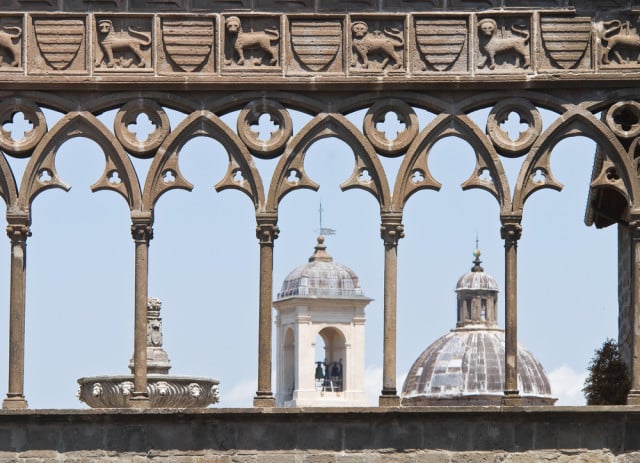
Photo: milla74/DepositPhotos
Why? Viterbo is relatively large and lively, unless you happen to be there on a Sunday in August. It has an attractive medieval centre, carefully restored after wartime bombing damage, an imposing papal palace, and good views from a number of lookout points around the old town.
Where? Lazio, 70 km northwest of Rome.
How to get there For a town relatively close to Rome, Viterbo takes a while to get to by local train (but it is still better than the bus as the bus will leave you in the outskirts). Your rail options are either a very slow and infrequent suburban train from Flaminia station to Viterbo viale Trieste, or the less slow and more frequent trains from Ostiense to Viterbo Porta Romana (1 hour 40 minutes). The old town is about 10 minutes’ walk from either station.
When to go Viterbo can be visited all year round, though spring through to late autumn may be the better time.
How much time will I need? Unless you're also going to the nearby Terme dei Papi spa for a soak, Viterbo itself can be seen relatively quickly, from two to three hours for a quick stroll to half a day.
What to see There are several picturesque streets within the old city walls. Corso d'Italia (later turning into Via Roma) is the main drag leading into the central Piazza del Plebiscito. Going past the square along twisting Via San Lorenzo, past the incongruously pretty Piazza della Morte, will bring you to the papal palace with its monumental square.
To get to the medieval town, go back to Piazza della Morte and follow Via La Fontaine from there until the first street on the right-hand side that will take you past Piazza San Carluccio to Via San Pellegrino running through the core of the pretty old quarter sloping down toward a shallow valley made into an urban mini-park (interestingly named Parco del Paradosso). This area is a curious little maze: it is surprisingly easy to get lost in despite its small size. Fun and even enjoyable if you have time to spare, but frustrating if you are trying to find your way back to catch a train.
Buon viaggio!
By Anna Zabelina
READ ALSO:
Comments
See Also
Whether it's for an afternoon trip or a long weekend, Lazio and its neighbouring regions – Umbria, Toscana and Campania – offer an abundance of places that are rich in beauty, character and delicious specialties. Just take your pick from the list below.
Assisi

Photo: Andreas Solaro/AFP
Why? Home of Italy’s patron saint and lovingly restored to its medieval glory after a devastating 1997 earthquake, Assisi enjoys endless panoramic views from its hillside terrace.
Where? Umbria, 130km north of Rome and 20km east of Perugia.
How to get there Assisi is just over two hours away from Rome by regular (regionale veloce) train. You can then take a bus from the station into town.
READ ALSO:
When to go While it is a pleasant destination all year round, spring and autumn will spare you from weather extremes. Bear in mind that the town gets very busy on St Francis Day (October 3rd-4th).
How much time will I need? Assisi is small enough to see in about three hours (not including the bus to and from the station). Getting there and back in a day is certainly possible, but it can also be comfortably combined with an overnight stay in nearby Perugia for a weekend trip.
What to see The imposing Basilica di San Francesco, on the left-hand side when facing the town from below, is the big draw. The Roman temple nestled among the buildings along the central Piazza del Comune also makes for a good photo. For the best views of the surrounding countryside, climb up to the ruined fortress (La Rocca) above the town.
Bagnoregio

Photo: StevanZZ/DepositPhotos
Why? Sitting on a steep outcrop in the middle of a vast rocky valley and reached by a long bridge from the modern town, Civita di Bagnoregio is mostly deserted save for a handful of street cafes and restaurants and souvenir shops. But it is worth visiting for the magnificent setting and haunting charm.
Where? Lazio, 90 km north/northwest of Rome and 10 km south of Orvieto.
How to get to there To reach Bagnoregio you need to take a train to Orvieto (1 hour 10/20 mins) and catch a blue Cotral bus. Bus stops are near the train station. Bear in mind that buses do not run on Sundays and public holidays. The rambling bus takes about 40 minutes, and the old town is a 30 minute walk from the bus stop, including the bridge crossing.
READ ALSO:
- Civita di Bagnoregio, the Italian town that refuses to die
- 14 reasons why Lazio should be your next Italian holiday destination
When to go Like Assisi, Bagnoregio is best visited in the spring and autumn: the dry rocky surroundings and clifftop setting can make it uncomfortably hot in the summer months and chilly in the winter.
How much time will I need? Anything between a couple of hours and half a day is more than enough to walk around and sit down for lunch. If you want to make a longer day or a weekend of it, Orvieto makes for a good stopover point and overnight stay option.
What to see Bagnoregio’s greatest asset is its setting. Inside the old town, rustic stone houses, and the occasional semi-wild garden, are sure to please photographers.
Bracciano – Trevignano – Anguillara

Photo: Andreas Solaro/AFP
Why? A trio of charming towns – Bracciano, Trevignano and Anguillara - set on the shores of lake Bracciano together make for a full day or a relaxing weekend away from Rome. All three are different, but all are equally attractive.
Where? Lazio, 35km northwest of Rome.
How to get there The easiest starting point is Bracciano town, reached by train from Rome (about an hour from Ostiense station). Cotral buses run between the three towns, making it possible to visit all three in a day, and between Anguillara and the nearest railway station 5km away. Trevignano has no train station, so in order to see all three, your route would be either Bracciano – Trevignano – Anguillara, or Anguillara – Trevignano – Bracciano. It may be best to leave Anguillara for last as it has the best afternoon/sunset light. If you are an avid cyclist, you can cycle between the towns along the lake.
READ ALSO:
When to go Spring through until mid-autumn is the best time to make the most of the refreshing lakeside setting and see the best of the flowering plants and mini-gardens.
How much time will I need? Each town is worth a couple of hours’ stopover. Seeing all three in a day is a possibility, but an overnight stay in Trevignano will make for a more leisurely weekend.
What to see Each town offers cosy old streets and nooks tended with great care by the residents, adorned with tastefully-arranged flowering shrubs, vines, and potted plants; Trevignano’s old main street behind the monumental archway is the most accessible example, but the steep lanes between Bracciano’s castle and the lake-view terrace are also worth a look. Bracciano has a commanding panorama of the lake from its lofty terrace, while Anguillara has a pleasant lakeside promenade for an afternoon stroll (and don’t miss the old town, and the fortress ruins, up on the hill if you are looking for snapshots).
Calcata
 Photo: rvrphotos/DepositPhotos
Photo: rvrphotos/DepositPhotos
Why? Deserted on Benito Mussolini’s orders in the 1930s when it was mistakenly declared unsafe, Calcata later became an artists’ haven, and is now enjoying a revival as a day trip destination. As with Bagnoregio, Calcata’s best assets are its dramatic position, jutting out on a cliff high above a wooded valley, and its medieval warren of old stone houses.
Where? Lazio, 35 km north of Rome.
How to get there The only way to get to Calcata by public transport is to take a Cotral bus (about an hour) from Saxa Rubra, the local train stop reached from Rome's Flaminia station (trains run every 10-15 minutes – check atac.roma.it for exact times; you can use a local Atac metro/bus ticket, or your monthly pass, for the 15-minute train trip). Bear in mind that as with most Cotral buses, there are none on Sundays... which sadly limits Calcata’s potential as an overnight stop, unless you are driving.
When to go Spring through to mid-autumn is the best time, as it will let you see Calcata at its liveliest and most inviting.
How much time will I need? Calcata can be seen in just an hour, but makes for a relaxing half-day or day trip. There are a few cafes and bars set around the tiny town if you fancy lunch, dinner or a drink.
What to see Other than visiting the old town, with its narrow lanes and art shops and scenic lookouts, you can lengthen your day by taking a stroll in the valley below. The views up at Calcata are never clear enough to make for a good photo, but they do let you fully appreciate its clifftop perch.
Capri

Photo: Daniel Slim/AFP
Why? Capri is gorgeous, and a radical change of scene from Rome that makes for a refreshing break – all within surprisingly easy reach. Do not be put off by its posh image; if you don't fancy browsing designer boutiques, there are plenty of pleasant walks offering stunning views.
Where? Campania, 210 km southeast of Rome and 50 km southeast of Naples.
How to get there If you do your homework with the timetables, it is possible to get from Rome to Capri in about two and a half hours. The Freccia trains take only an hour to get from Rome to Naples (the less expensive Intercity takes two hours); from there it is a short bus/tram/taxi ride to Molo Beverello, the departure point for the Capri-bound ferries (see schedule here). The faster boats leave from there and take 40-50 minutes while slower ones leave from Calata Porta di Massa, a few minutes away and take an hour and a half).
READ ALSO:
When to go Visiting from mid-April to late October will get you the best weather. The winter months will guarantee an absence of tourist crowds, but you may be dealing with limited boat service. The height of summer (mid-July through August) is so busy that it is best avoided.
How much time will I need? It is possible to see Capri in a day, or even half a day if you are in a hurry; but hurrying around in a place as beautiful as this may defeat the object. The best way to appreciate the island is to stay overnight, letting you enjoy the peace and quiet when the day-tour groups have left, or before they arrive at about 11am. Despite Capri’s upscale reputation, it has quite a few reasonable two and three star hotels, and Anacapri has a wealth of holiday apartments. Some hotels impose a two-night minimum stay in the high season, but alternatives do exist.
What to see If luxury shopping is not your thing, head to Anacapri for the seggiovia, a chairlift ride to the top of Monte Solaro, Capri’s highest mountain offering breathtaking views. Anacapri is a pleasant town worth lingering in; walk down its pedestrian street and make a detour to the San Michele Church to look at its painted majolica floor depicting Adam and Eve’s expulsion from Heaven. For the more adventurous, there are walks from Punta Tragara high above the coastal cliffs, from Capri town to the ruins of Villa Tiberia, from Monte Solaro down to Anacapri, and from Anacapri to the Migliara lookout… among others.
San Gimignano

Photo: Filippo Monteforte/AFP
Why? Charmingly medieval, San Gimignano bears marks of encroaching tourism but is not spoiled by them. With its 14 towers bristling above the otherwise low skyline, this town, a sort of Tuscan Manhattan, is set among peaceful rolling hills and has enough beauty within and beyond its walls to please even the most demanding photographer.
Where? Tuscany, 210 km northwest of Rome and 30 km south of Florence.
How to get there You need to catch a train Florence then take the local train – an hour’s ride – to Poggibonsi station, and a connecting TiEmme bus (20-30 min) to San Gimignano.
READ ALSO:
- The very best of the Tuscan Maremma
- How you can stay in an 'abandoned village' in the Tuscan forest
- In search of silence in the Casentino forest
When to go San Gimignano may be less inviting in the depths of winter, but speaking from experience, it is delightful from early spring to early November.
How much time will I need? San Gimignano can be easily seen in a couple of hours, but its charm is best appreciated at a more leisurely pace. The hands-down best way is with an overnight stay that will let you have the streets virtually to yourselves in the late evening and early morning, especially outside the busy summer months.
What to see The town is ideal for leisurely browsing; its two central squares are surrounded by picturesque buildings, not to mention the famous towers. Walk up to the old fortress for a better view, or climb the Torre Grossa, the highest of the surviving towers, for the best view of the town and the surrounding countryside. Grab a seat at the outside tables of the Enoteca di Vinorum looking out over the Tuscan landscape to soak in the sun – but keep in mind that the place is quite popular at sunset, and there are only half a dozen tables!
Spoleto

Photo: Tiziaiana Fabi/AFP
Why? Set on a steep hillside with dramatic views across a deep gorge on its other side, Spoleto has a lovely Duomo square, a stunning medieval viaduct bridging the gorge, and a Roman theatre.
Where? Umbria, 100km north of Rome.
How to get there Spoleto is relatively easily reached by train, about an hour and a half from Rome. A shuttle bus runs between the train station and Piazza Garibaldi, the square at the bottom of the old town. The old town itself is largely vertical, but there is help in the shape of an escalator going from the vicinity of Piazza Garibaldi to the fortress (Rocca) at the top; you can then see the town with considerably less effort as you descend.
When to go Spring through mid-autumn is the best time, as the surrounding hills can look somewhat drab in the winter months.
How much time will I need? Spoleto can be seen in half a day, making it a reasonable day trip from Rome. Combining it with Norcia makes for either a long day or a leisurely weekend.
What to see The escalator will leave you off the side of the wide circular trail going around the Rocca fortress (called via Gattaponi; its other side is called via del Ponte). Going clockwise along the trail lets you look at the town and nearby hills and take in the star attraction, the 81-metre-tall Ponte delle Torri viaduct, halfway along the way. There is a hotel with a scenic overlook (Hotel Gattapone) right next to it that makes for a good drinks stop or a striking spot for an overnight stay.
Ostia Antica

Photo: billperry/DepositPhotos
Why? The largest urban archaeological site within easy reach of Rome, Ostia Antica may not have the reputation of Pompeii but gives curious visitors a good idea of a Roman city and can be visited in a leisurely half-day outing.
Where? Lazio, 20 km southwest of Rome.
How to get there Ostia Antica (not to be confused with Ostia “proper”, the nondescript modern seaside town) is serviced by frequent local trains (every 15 mins, taking about 25 mins) leaving from the Roma-Lido station next to Piramide metro.
READ ALSO:
- Seven crowd-free alternatives to Italy's tourist hotspots
- MAPS: Which are the safest parts of Italy to visit in terms of Covid-19 infections?
How much time will I need? If you're in a hurry, you can see the highlights in under two hours; a half day, perhaps with a picnic lunch, will let you explore at a more manageable pace. Keep in mind that the site is quite extensive.
What to see The ruins, obviously… there are no frescoes as you would see in Pompeii or Ercolano, but if you take the time to explore the streets, Rome’s one-time maritime port still lets you visualize the way of life two millennia ago.
Tivoli

Photo: Andreas Solaro/AFP
Why? An excellent summer getaway, Tivoli has three villas to cater to every visitor’s taste: the impressive Roman ruins of Villa Adriana just outside town, the romantic gorge of Villa Gregoriana with its gushing waterfalls, and the Renaissance masterpiece of Villa D’Este with its thousand fountains.
Where? Lazio, 25 km east of Rome
How to get there Unfortunately, the approach to Tivoli makes for a rather unappealing introduction. You would have to brave the ugly bus terminal at Ponte Mammolo to get on one of the regular Cotral buses (takes about an hour; make sure you get off at the Piazza Garibaldi stop in the town centre; villa D’Este is only a few steps away), or take the train (between 45 min and an hour) past Rome’s dreary eastern suburbs to the dilapidated Tivoli station and make your way from there (in which case, Villa Gregoriana 200 m away, at the end of Viale Mazzini north of the station, will be your nearest destination). Villa Adriana is a local bus ride away (about 2 km).
When to go Spring, summer and early autumn are best. The water attractions at Villa Gregoriana and Villa D’Este make for a welcome escape from the oppressive summer heat. As an added bonus, Villa D’Este offers night visits with magical subtle lighting between 8pm and midnight on Fridays and Saturdays from early July until mid-September.
How much time do I need? Villa Gregoriana and Villa D’Este can be seen in half a day. Seeing Villa Gregoriana in the afternoon followed by dinner in the old town and a night visit to Villa D’Este makes for a great Saturday outing. Adding Villa Adriana into the mix makes either for a full day or for a very unhurried weekend… but Tivoli town outside the old centre is rather plain and as such, does not quite warrant an overnight stay.
What to see The three villas are the principal draw. Going further into the hills to the east, you can take a Cotral bus to Subiaco and its striking San Benedetto monastery. In a rare twist, these buses also run on Sundays; you can return to Rome directly from Subiaco.
Viterbo

Photo: milla74/DepositPhotos
Why? Viterbo is relatively large and lively, unless you happen to be there on a Sunday in August. It has an attractive medieval centre, carefully restored after wartime bombing damage, an imposing papal palace, and good views from a number of lookout points around the old town.
Where? Lazio, 70 km northwest of Rome.
How to get there For a town relatively close to Rome, Viterbo takes a while to get to by local train (but it is still better than the bus as the bus will leave you in the outskirts). Your rail options are either a very slow and infrequent suburban train from Flaminia station to Viterbo viale Trieste, or the less slow and more frequent trains from Ostiense to Viterbo Porta Romana (1 hour 40 minutes). The old town is about 10 minutes’ walk from either station.
When to go Viterbo can be visited all year round, though spring through to late autumn may be the better time.
How much time will I need? Unless you're also going to the nearby Terme dei Papi spa for a soak, Viterbo itself can be seen relatively quickly, from two to three hours for a quick stroll to half a day.
What to see There are several picturesque streets within the old city walls. Corso d'Italia (later turning into Via Roma) is the main drag leading into the central Piazza del Plebiscito. Going past the square along twisting Via San Lorenzo, past the incongruously pretty Piazza della Morte, will bring you to the papal palace with its monumental square.
To get to the medieval town, go back to Piazza della Morte and follow Via La Fontaine from there until the first street on the right-hand side that will take you past Piazza San Carluccio to Via San Pellegrino running through the core of the pretty old quarter sloping down toward a shallow valley made into an urban mini-park (interestingly named Parco del Paradosso). This area is a curious little maze: it is surprisingly easy to get lost in despite its small size. Fun and even enjoyable if you have time to spare, but frustrating if you are trying to find your way back to catch a train.
Buon viaggio!
By Anna Zabelina
READ ALSO:
Join the conversation in our comments section below. Share your own views and experience and if you have a question or suggestion for our journalists then email us at [email protected].
Please keep comments civil, constructive and on topic – and make sure to read our terms of use before getting involved.
Please log in here to leave a comment.